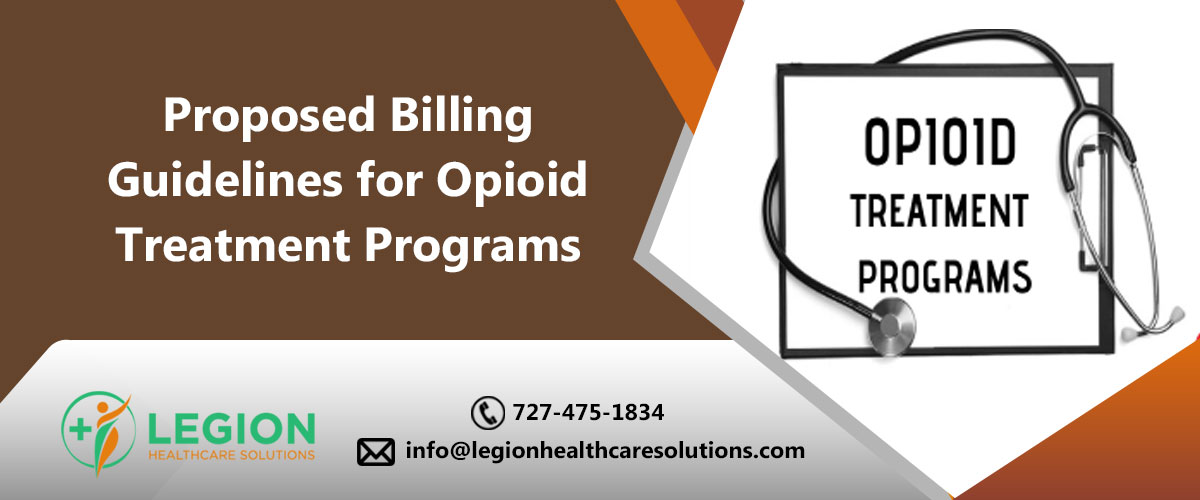
Proposed Billing Guidelines for Opioid Treatment Programs
Recently, CMS has proposed Medicare Physician Fee Schedule Proposed Rule for the year 2023. This proposed rule also includes billing for Opioid Treatment Programs (OTPs). These proposed billing guidelines for Opioid Treatment Programs include revising pricing for the drug component of the methadone; modifying the payment rate for the non-drug component of the bundled payments for episodes of care to base the rate for individual therapy on a crosswalk code describing a 45-minute session; allowing the OTP intake add-on code to be furnished via two-way audio-video communications technology; and discussing SAMHSA and DEA guidance.
Opioid Treatment Programs (OTPs)
In order to stabilize the price for methadone for CY 2023 and subsequent years, CMS proposed to revise their methodology for pricing the drug component of the methadone weekly bundle and the add-on code for take-home supplies of methadone. Under this proposal, CMS would base the payment amount for the drug component of HCPCS codes G2067 and G2078 for CY 2023 and subsequent years on the payment amount for methadone in CY 2021 and update this amount annually to account for inflation using the PPI for Pharmaceuticals for Human Use (Prescription). Additionally, based on the severity of needs of the patient population diagnosed with opioid use disorder (OUD) and receiving services in the OTP setting, CMS proposed to modify the payment rate for the non-drug component of the bundled payments for episodes of care to base the rate for individual therapy on a crosswalk code describing a 45-minute session, rather than the current crosswalk to a code describing a 30-minute session. This would increase overall payments for medication-assisted treatment and other treatments for OUD, recognizing the longer therapy sessions that are usually required.
CMS also proposed to allow the OTP intake add-on code to be furnished via two-way audio-video communications technology when billed for the initiation of treatment with buprenorphine, to the extent that the use of audio-video telecommunications technology to initiate treatment with buprenorphine is authorized by the Drug Enforcement Administration (DEA) and Substance Abuse and Mental Health Services Administration (SAMHSA) at the time the service is furnished. CMS also proposes to permit the use of audio-only communication technology to initiate treatment with buprenorphine in cases where audio-video technology is not available to the beneficiary and all other applicable requirements are met.
Additionally, CMS is clarifying that OTPs can bill Medicare for medically reasonable and necessary services furnished via mobile units in accordance with SAMHSA and DEA guidance. CMS is proposing that locality adjustments for services furnished via mobile units would be applied as if the service were furnished at the physical location of the OTP registered with DEA and certified by SAMHSA.
Basics about Methadone
Methadone is a medication used to treat Opioid Use Disorder (OUD). Methadone is a long-acting full opioid agonist, and a schedule II controlled medication. Methadone is a medication approved by the Food and Drug Administration (FDA) to treat Opioid Use Disorder (OUD) as medication-assisted treatment (MAT), as well as for pain management. When taken as prescribed, methadone is safe and effective. Methadone helps individuals achieve and sustain recovery and to reclaim active and meaningful lives. Methadone is one component of a comprehensive treatment plan, which includes counseling and other behavioral health therapies to provide patients with a whole-person approach. Methadone, a long-acting opioid agonist, reduces opioid craving and withdrawal and blunts or blocks the effects of opioids. Taken daily, it is available in liquid, powder, and diskettes forms.
Patients taking methadone to treat OUD must receive the medication under the supervision of a practitioner. After a period of stability (based on progress and proven, consistent compliance with the medication dosage), patients may be allowed to take methadone at home between program visits. The length of time a person receives methadone treatment varies. According to the National Institute on Drug Abuse publication Principles of Drug Addiction Treatment: A Research-Based Guide (Third Edition), the length of methadone treatment should be a minimum of 12 months. Some patients may require long-term maintenance. Patients must work with their MAT practitioner to gradually reduce their methadone dosage to prevent withdrawal.
Legion Health Care Solutions is a leading medical billing company that can assist you in revenue cycle functions for your practice. We hope that these proposed billing guidelines for Opioid Treatment Programs (OTPs) would help you receive accurate insurance reimbursement for government and private payers. To know more about our pain management or anesthesiology billing, you can call us at 727-475-1834 or email us at info@legionhealthcaresolutions.com
Get A Quote
[forminator_form id=”4528″]
